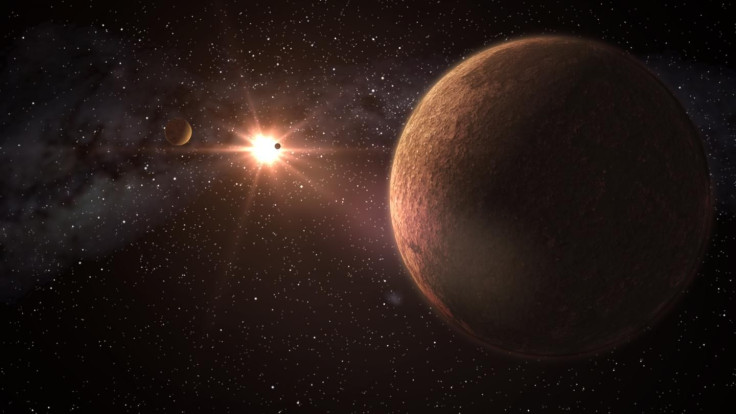Earth-Sized Rocky Exoplanets, Super-Earths Discovered In Two Star Systems

An international team of astronomers looking for planets beyond our solar system — also known as exoplanets — have found two new star systems, one hosting three Earth-sized rocky worlds and the other with two super-Earths.
The distant exoplanets, found by researchers from Instituto de Astrofísica de Canarias (IAC) and the University of Oviedo in Spain, were identified in the data gathered by the K2 mission of NASA’s Kepler satellite. Essentially, due to their orbits, the planets kept blocking the light from their respective stars from time to time, creating transits which allowed the team to see the bodies for the first time.
Once the planetary systems were spotted, follow up investigation from Gran Telescopio Canarias (GTC) located at the Roque de los Muchachos Observatory in Spain revealed their basic features.
According to a release from IAC, the three rocky worlds in the first star-system carry the same terrestrial radii as that of Earth and appear just as big as our planet. They are orbiting a red dwarf star named K2-239, which is located some 160 light years away from us in the constellation of the Sextant. The second system also includes a cool red dwarf, named K2-240. However, the exoplanets in question here are nearly twice as big as our world and have been characterized as super-Earths.
Though finding planets with rocky nature is one of the very first requirements for finding a habitable world, it still remains unclear if the conditions on these worlds are suitable enough to support life. Red dwarf stars are typically small and carry temperatures around 3,100 to 3,500 degrees Celsius, which is relatively cool in comparison to our hot sun. But in this case, the orbital distance of the planets might create some problems.
All three bodies in the first system take merely five to ten days to complete a single orbit around their star, while in the second system, the two super-Earths take just six and twenty days respectively to circle this star. That said, being this close, the strong radiation from the stars could be making these bodies too hot to allow life to survive. The researchers posit the surface temperatures on these exoplanets could be tens of degrees higher than those prevailing on Earth.
Their atmospheres might play role in blocking this radiation, but that still has to be analyzed. Researchers think future observations from the upcoming James Webb Space Telescope, could determine the atmospheric composition of these planets, while spectroscopic observations from ESPRESSO instrument, installed on European Southern Observatory’s Very Large Telescope (VLT) or future GTC spectrographs will help determine masses, densities, and other physical properties of these exoplanets.
The study, titled “Two planetary systems with transiting Earth-size and super-Earth planets orbiting late-type dwarf stars,” will be published in the Monthly Notices of the magazine Royal Astronomical Society and the arXiv preprint of the paper is available online.
© Copyright IBTimes 2024. All rights reserved.





















